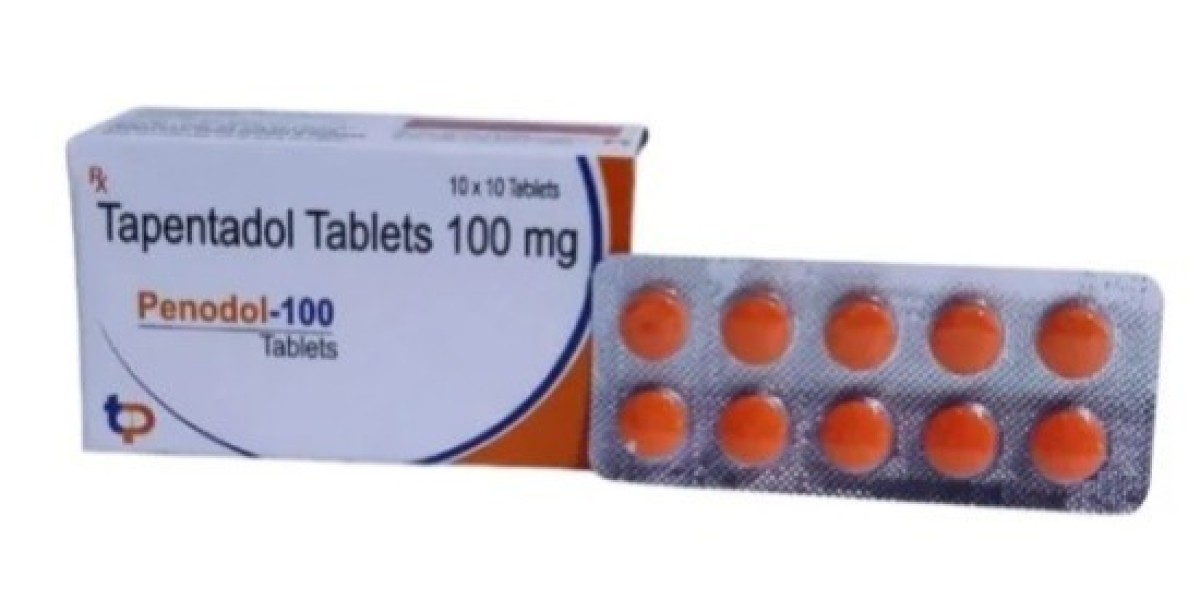Every parent knows the panic that sets in when a child spikes a fever. Whether it's due to teething, a seasonal cold, or a recent vaccination, your first thought is always: how can I help them feel better quickly and safely?
This is where Penodol 100mg comes in — a trusted, child-friendly paracetamol formula specifically designed to combat fever and mild pain in infants and toddlers. In this blog, we’ll explore what Penodol 100mg is, how it works, when to use it, and why it’s become a go-to solution for concerned parents.
What is Penodol 100mg?
Penodol 100mg is a liquid oral suspension containing 100 mg of paracetamol per 5 ml, tailored for infants and young children. Paracetamol (also known as acetaminophen) is a widely used analgesic (pain reliever) and antipyretic (fever reducer).
Unlike adult painkillers, Penodol 100mg is specifically formulated for young children, ensuring the dosage is low and safe, while still effective at providing relief.
Common Uses of Penodol 100mg
Penodol is used to relieve:
- Fever due to infections, vaccinations, or teething
- Mild to moderate pain such as earaches, sore throats, or headaches
- Teething discomfort
- Post-immunization reactions
Its mild and fast-acting formulation makes it an excellent first-line remedy for most common childhood ailments.
How Does It Work?
Paracetamol works by:
Lowering body temperature by acting on the brain’s hypothalamus, the center responsible for regulating heat.
Blocking pain signals from reaching the brain by inhibiting certain chemicals (prostaglandins).
As a result, Penodol 100 mg not only reduces fever but also helps children feel more comfortable and rest better.
Dosage Guidelines for Penodol 100mg
Proper dosage is key to safety. Always measure doses using the device provided (syringe or cup). Never use household spoons.
| Age Group | Typical Dose | Frequency |
|---|---|---|
| 3–6 months | 60 mg | Every 4–6 hours (max 4x/day) |
| 6–12 months | 120 mg | Every 4–6 hours (max 4x/day) |
| 1–5 years | 120–250 mg | Every 4–6 hours (max 4x/day) |
Do not exceed 4 doses in 24 hours.
If unsure, consult your pediatrician, especially if your child is under 3 months old or has other health conditions.
How to Administer Penodol
- Shake the bottle well before use.
- Use a syringe or medicine cup to measure the exact dose.
- Give with or without food.
- Keep a note of the time and dose to avoid double-dosing.
If your child vomits shortly after taking Penodol, do not repeat the dose without medical advice.
Why Parents Trust Penodol 100mg
Pediatric-Friendly Strength – Tailored to suit young children
Quick Relief – Works within 30–60 minutes
Minimal Side Effects – Gentle on the stomach
Easy to Use – Liquid form with pleasant taste
Reliable and Affordable – Widely available and cost-effective
Safety and Side Effects
Penodol works and is generally safe when used correctly, but rare side effects can include:
- Skin rash or itching
- Nausea or upset stomach
- Liver problems (with overdose)
Seek emergency care if:
- You suspect an overdose
- The child is unusually drowsy or irritable
- There is difficulty breathing or facial swelling
Storage and Precautions
- Store at room temperature (15–25°C)
- Keep out of reach of children
- Always check expiry date
- Don’t mix with other medicines containing paracetamol
- Consult a doctor if the fever lasts more than 3 days
When to See a Doctor
Use Penodol for mild conditions. But seek medical help if your child:
- Has a fever for more than 72 hours
- Refuses fluids and shows signs of dehydration
- Becomes less responsive or more lethargic
- Has persistent vomiting or diarrhea
Conclusion
Penodol 100mg offers a reliable, gentle solution to help your child recover from everyday fevers and aches. As a parent, your priority is your child’s comfort and safety, and with Penodol 100mg, you can have confidence in both. Just remember to follow dosage instructions closely and reach out to your pediatrician if symptoms persist.
With proper use, Penodol 100mg helps bring relief, rest, and peace of mind — for both kids and parents.






